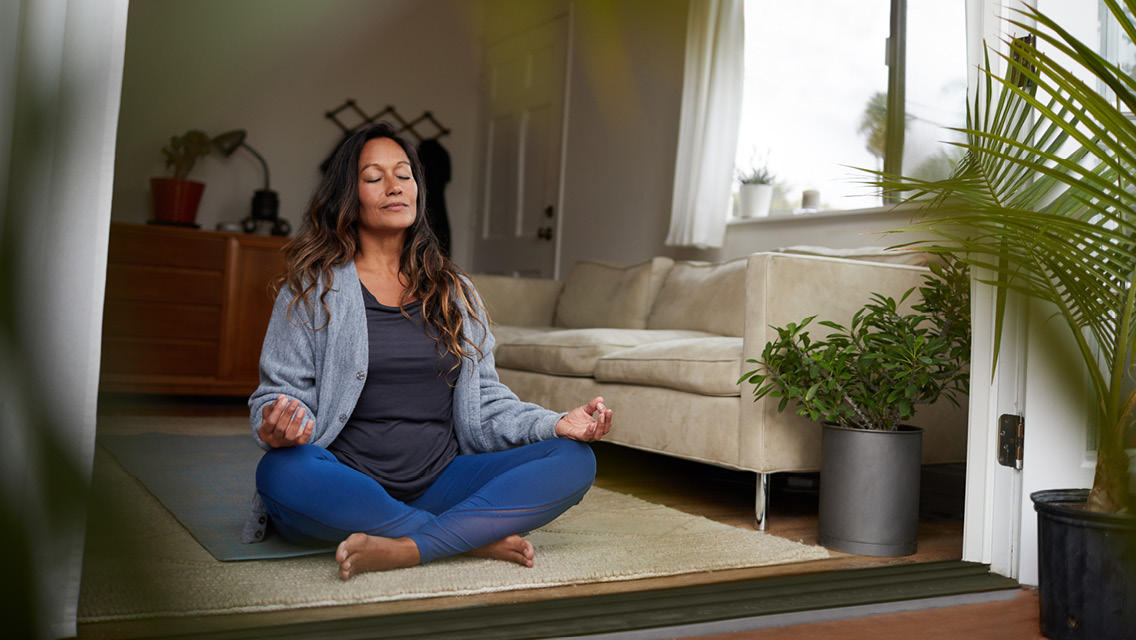The first time Susan Kaiser Greenland tried to meditate, she felt like she was going to explode.
In addition to being pregnant and practicing corporate law, she was also doing everything she could to help her husband, Seth, recover from a serious illness. One night, concerned about his wife’s well-being, Seth asked her to join him in a meditation class at their local Zen center. Greenland decided to go along to be supportive.
Sitting and observing her breath was excruciating. “I just couldn’t stand it,” she recalls. “I had so many strong emotions that I was avoiding.” She ran out of the meditation room after a few minutes.
Still, Greenland was intrigued by the challenge, so she began listening to meditation tapes to ease into a practice. “I realized that this was something that I probably needed to pursue because it was so difficult for me,” she says.
As she began to reap the benefits of meditation, Greenland was inspired to share them. So she and Seth created The Inner Kids Foundation, a nonprofit organization offering secular mindfulness training in schools, hospitals, and other venues in the Los Angeles area. She now teaches a hybrid of classical meditation practices with a focus on the ABCs of mindfulness — attention, balance, and compassion — to kids ages 4 and up, as well as parents, teachers, healthcare providers, and other professionals.
Greenland has distilled her teaching into two books — The Mindful Child and Mindful Games — and shares her insights for creating mindfulness practices for all ages.
Experience Life | What skills can kids learn from mindfulness?
Susan Kaiser Greenland | Mindfulness practices develop the power of attention and teach emotional balance and compassion. To explain this, I created the Circle of Life Skills.
At the center is focusing, because strong awareness of the present moment is foundational to the other skills. At the top of the circle is quieting, which is a way of calming down your nervous system when you’re excited or upset. Quieting gets easier once you are focused in the present.
Next is seeing — being able to notice what’s happening around you and within you clearly — followed by reframing what you see, if necessary. These two skills work together to help you adjust your perspective, such as seeing someone else’s position or the other side of an argument.
The skill of caring follows, since we want to work toward a more compassionate way of being in the world — for yourself and others. This is tied to connecting with other people. It is difficult to connect if you don’t care about someone or something, but connecting helps you bring the mindfulness and meditation skills that you learn away from “me” and toward a “we.”
EL | What’s the best age for kids to start learning these techniques?
SKG | You can begin at any age, but teaching a 4-year-old is different from working with a teenager. I target my teaching for different age groups: young children, elementary school–aged children, tweens, and teens.
It’s imperative to get a clear sense of developmental readiness with respect to these different age groups, as well as a good grasp on what is going to be helpful for each group versus what’s going to be “roll-your-eyes” material for them. Some games that are effective for the younger kids are going to completely turn off or bore the older kids.
Consistency is also key, so remembering to add brief moments of awareness into daily life and practicing mindfulness are important.
EL | Many of the games you teach are played while moving rather than sitting. Will you explain why and give an example of a game that involves movement?
SKG | Many people start to tense up when they are first learning to meditate, because they don’t realize that they need to relax their body and mind so that they can more easily stay with all the different thoughts and emotions that come up.
Movement with intention gives you something to focus on — especially if you’re working with strong emotions that are hard to hold. Your stress hormones, like cortisol, are likely activated, and movement is an effective way to process those hormones.
One of my favorite games with movement is Thankful With Every Step. Let’s say you’re caught in a rut where you feel something has gone wrong, where someone has violated your interpersonal boundaries, taken advantage of you, or hurt your feelings, or where you get into a half-empty rather than half-full mental state.
In Thankful With Every Step, you don’t pretend that this lousy thing didn’t happen; it’s not good to deny your emotions and sweep them under the rug. Instead, you acknowledge a lousy thing happened and then every time you take a step you silently remind yourself what you’re grateful for, such as I’m thankful that it’s sunny outside today or I’m thankful that I have my health. Doing this broadens your perspective to include the lousy thing that happened along with the good.
EL | What typically works for kids of different ages?
SKG | For little kids, a good example of a focusing exercise that’s fun and builds self-awareness in relationships is Tic-Toc. In this game, kids sway from side to side while chanting a rhyme; when they get to the center of the sway, they either take three breaths or listen to the sound of a tone or bell until it fades away.
A game for teens that develops attention is sky or star gazing. Grab a floppy hat, sunglasses, and a comfortable chair or blanket. Then go and sit outside, and simply rest your eyes on the horizon. When the mind starts wandering, bring it back to what you’re looking at. This game also helps you learn to rest and relax.
EL | Did you practice these games with your own children?
SKG | Yes. My children are grown now, but if you ask either of them, they’ll tell you how these principles of mindfulness — the capacity to stop, pause and compose yourself, settle, and then respond rather than react — are skills woven into their lives. They use them all the time.
EL | How had practicing meditation affected your life over the years? Is it still a challenge?
SKG | I’m far from perfect! I still get caught up in exactly the same kind of dramas that I used to, but just not as often, and they tend not to stick. I spring back faster. It just feels as if there’s been a shift in me. I’m happier, and my family also says I’m easier to be around.
This article originally appeared as “Mindful Fun.”




This Post Has 0 Comments